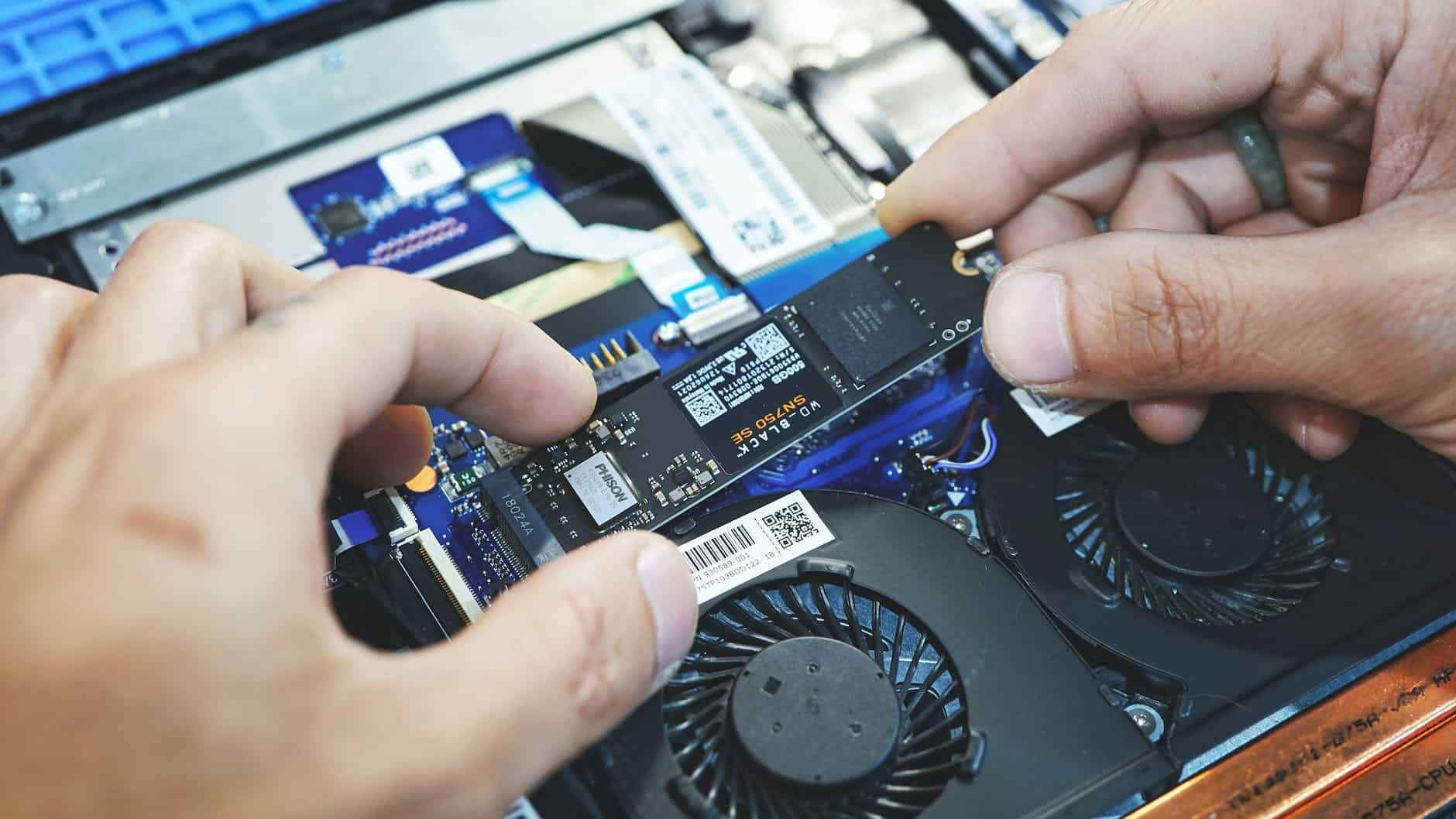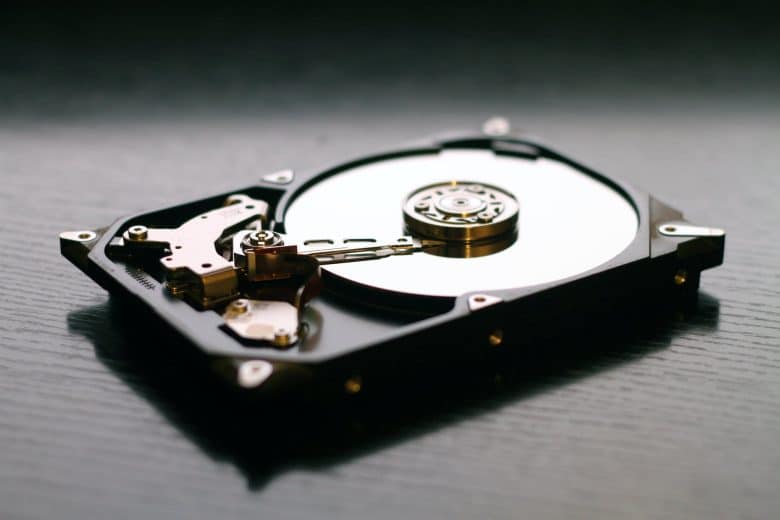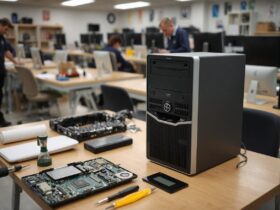PC storage is a crucial component of any computer, as it is where all of your files, documents, photos, and other data are stored. There are two main types of storage: solid-state drives (SSDs) and hard disk drives (HDDs). Both have their own unique features and benefits, and it is important to understand the differences between them in order to choose the best storage solution for your needs. Read on to compare SSD vs HDD for your needs.
Types of storage
Solid state drives (SSDs)
Solid state drives are a newer type of storage that use flash memory to store data. They are faster, lighter, and more durable than traditional hard drives, but they are also generally more expensive. SSDs have no moving parts, which makes them less prone to physical damage and allows them to access data faster. They are also quieter and use less power than hard drives.
Hard disk drives (HDDs)
Hard disk drives are the more traditional type of storage, and they use spinning disks to store data. They are generally slower, larger, and less expensive than SSDs, but they are also more reliable and have a higher capacity for storing data. HDDs are best suited for storing large amounts of data that are not accessed frequently, such as music, movies, and backups.
Comparing SSD vs HDD
- Speed: SSDs are generally faster than HDDs because they have no moving parts. Data can be accessed almost instantly from an SSD, while it can take longer to access data from an HDD because the drive has to spin up to the appropriate speed before the data can be accessed.
- Size and weight: SSDs are generally smaller and lighter than HDDs. This makes them a good choice for laptops and other portable devices where size and weight are important considerations.
- Durability: SSDs are more durable than HDDs because they have no moving parts. This makes them less prone to physical damage and allows them to withstand more shock and vibration than HDDs.
- Capacity: HDDs generally have a higher capacity for storing data than SSDs. This makes them a good choice for storing large amounts of data that are not accessed frequently, such as music, movies, and backups.
- Price: HDDs are generally less expensive than SSDs, especially when it comes to larger capacities. However, the price per gigabyte of storage is generally lower for SSDs, which means you may pay more upfront for an SSD, but you may get more storage for your money in the long run.
- Power consumption: SSDs use less power than HDDs, which can be a benefit if you are using your computer on battery power.
Storage for different use cases
The type of storage you choose will depend on your specific needs and budget. For example, if you are using your computer for tasks that require fast access to data, such as gaming or video editing, an SSD may be a better choice because it has faster access times. On the other hand, if you are looking for a cost-effective solution for storing large amounts of data, an HDD may be a better choice. Here are some specifics for some of the most common use cases:
Gaming
- Speed: Gamers typically require fast access to data, as this can affect the performance of their games. Solid state drives (SSDs) are generally faster than hard disk drives (HDDs) because they have no moving parts, which allows them to access data almost instantly. If you are looking for the best possible gaming performance, an SSD is the way to go.
- Capacity: The capacity of the drive refers to how much data it can store. If you have a lot of games and other large files, you will need a drive with a higher capacity. Consider how many games you have installed and how much space they take up, as well as any other large files you may want to store on your computer.
- Budget: Storage can be a significant part of the overall cost of a gaming PC. If you are on a tight budget, you may need to trade off capacity or performance in order to stay within your budget. Consider what is most important to you and prioritize accordingly.
- Other considerations: There are a few other things to consider when choosing storage for gaming, such as the interface (the connection between the drive and the computer) and the form factor (the size and shape of the drive). Make sure the drive you choose is compatible with your computer and fits in the available space.
Video & Photo Editing
- Speed: Video editing can be a resource-intensive task, and fast access to data is important for smooth performance. As with gaming, an SSD is generally the best choice for video editing because it can help improve the performance of your computer and make your workflow more efficient.
- Capacity: If you are working with large video files, you will need a drive with a high capacity. Consider how many video files you have and how much space they take up, as well as any other large files you may want to store on your computer.
- Other considerations: As with the considerations for gaming, cost, interface between the computer and drive, and the size/shape of the drive are all things to consider before pulling the trigger on your storage purchase.

Business
Everything we already mentioned will apply to a business computer, but if the PC is only being used for business, there could be some other things to consider:
- File storage pattern: Will you be saving all your files to a local drive? Then more storage capacity will be important. But if you have a network drive where all files are stored, then a lot of local storage isn’t needed. How big are your working files? Many business users only save MS Office files and a few other file types. Often, they are relatively small files. Unless your work involves photos, videos, or complex simulation programs, you probably don’t need to spend a lot of money on storage capacity.
- Speed: You want your workers to be efficient, but as with the file size discussed above, anyone working with MS Office files probably won’t notice a big difference between SSD and HDD storage. However, big spreadsheets with a lot of calculations, or other complex software for simulation or photo/video editing, would certainly need an SSD.
- Reliability: Businesses rely on their computers and storage to be reliable and available at all times. Consider choosing a drive that has a good track record for reliability and a long warranty period.
- Budget: As with gaming, you have to balance your desire for the best possible performance against what your business can afford. Especially if you need multiple computers, using high-capacity SSDs for every computer can be cost-prohibitive.
Storage specifications
When shopping for storage, it is important to consider the specifications of the drive. We’ve talked about many of the important factors to consider when choosing the right storage type and capacity. But there are other specifications that you should understand:
- Capacity: This refers to how much data it can store. SSD and HDD capacities are typically measured in gigabytes (GB) or terabytes (TB). If you have a lot of data that you need to store, you will need a drive with a higher capacity.
- Transfer speed: The transfer speed of an SSD or HDD refers to how fast data can be transferred to and from the drive. Transfer speeds are typically measured in megabytes per second (MB/s) or gigabytes per second (GB/s). A higher transfer speed means that data can be accessed more quickly, which can be beneficial for tasks that require fast access to data, such as gaming or video editing. We mentioned that SSDs are faster than HDDs in this area, but keep in mind that within each type, some drives are designed to be faster than others.
- Interface: The interface refers to the connection between the drive and the computer. The most common interfaces for SSDs are SATA (Serial Advanced Technology Attachment) and NVMe (Non-Volatile Memory Express). SATA is a slower interface that is commonly used in older computers, while NVMe is a faster interface that is more commonly used in newer computers. HDDs are almost exclusively SATA interfaces.
- Form factor: The form factor of a drive refers to its size and shape. The most common form factors for SSDs are 2.5 inches (for use in laptops) and M.2 (a smaller, more compact form factor that is commonly used in newer computers). HDDs are most commonly 3.5 inches for use in desktop PCs.
- Price per gigabyte: The price per gigabyte of a drive refers to the cost of each unit of storage. This is very different when comparing SSDs versus HDDs, but it can also vary significantly even across one type of drive. Price per GB will generally increase as the drive’s speed increases and as its form factor gets smaller. However, by dividing the total price by the drive capacity, you can compare drives that are similar in their performance, even though they might have very different capacities.
In conclusion, storage is an important consideration when choosing a computer or upgrading your existing one. Understanding the differences between SSDs and HDDs, as well as the various storage specifications, will help you make an informed decision about the best storage solution for your needs.
Want to learn more about managing your disk space within the Windows OS? Here’s some great information on disk management Windows 11.













Leave a Reply